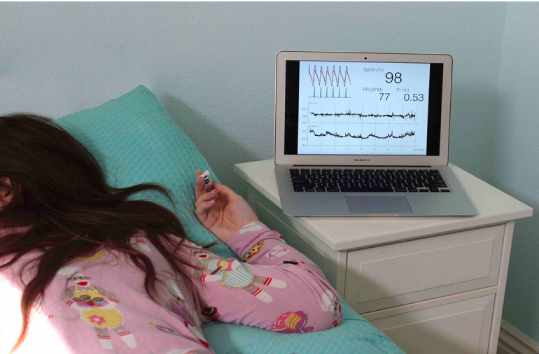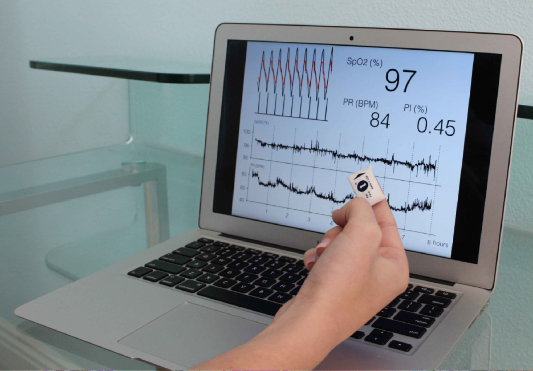California-based True Wearables recently announced a new product called Oxxiom, which the company claims to be the world’s first wireless, fully disposable, single-use pulse oximeter.
The new tool packs the electronics and bio-sensing technology of a clinical grade pulse oximeter into a compact, user-friendly device that provides more than 24 hours of continuous pulse rate monitoring. Oxxiom measures arterial oxygen saturation (SpO2), pulse rate (PR), and perfusion index (PI) — the pulse strength at the measurement site.
Weighing a feather-light 0.12 ounces (3.5 grams), Oxxiom’s disposability eliminates the necessity of sterilization and significantly reduces cross-contamination risks.
Oxxiom incorporates True Wearables’ proprietary technology that enables complete user mobility within a 33-foot range, including sleeping in any position, exercise, restroom visits, hand-washing, even showering while connected to the device.
Oxxiom is monitor-agnostic, meaning it is designed to work with mobile devices, tablets, laptops and desktop comuters. It does not require external batteries or battery chargers, and neither nail polish nor ambient light will affect its operation.
Pulse oximetry technology enables noninvasive monitoring of a patient’s SpO2, PR, and PI, providing doctors with an indication of real-time current cardiorespiratory status. Pulse oximeters are widely used during medical procedures that require anesthesia or sedation, during sleep monitoring studies, and also used to monitor conditions that affect oxygen blood levels, such as heart attack, heart failure, anemia, COPD (chronic obstructive pulmonary disease), and apnea.
According to the oxygen transport and measurement reference site Oximetry.org, the principle of pulse oximetry is based on the red and infrared light absorption characteristics of oxygenated and deoxygenated hemoglobin: Oxygenated hemoglobin absorbs more infrared light and allows more red light to pass through, while deoxygenated (or reduced) hemoglobin absorbs more red light (600-750 nanometers wavelength) and allows more infrared light (850-1000 nm wavelength) to pass through.
Pulse oximetry uses a light emitter with red and infrared LEDs that shines through a reasonably translucent site with good blood flow. Typical adult and pediatric sites are the finger, toe, pinna (top) or lobe of the ear. Infant sites are the foot or palm of the hand and the big toe or thumb. Opposite the emitter is a photodetector that receives the light that passes through the measuring site.
Oxxiom is expected to ship in the second quarter of 2016 but has not yet been cleared by the U.S. Food and Drug Administration for clinical use as a medical device.
 True Wearables is a startup founded in 2014 by Marcelo Lamego (who earned his Ph.D. at Stanford University), previously of The Boston Consulting Group; Masimo; Cercacor; and most recently a member of the Apple Watch development team at Apple Inc.
True Wearables is a startup founded in 2014 by Marcelo Lamego (who earned his Ph.D. at Stanford University), previously of The Boston Consulting Group; Masimo; Cercacor; and most recently a member of the Apple Watch development team at Apple Inc.
Lamego is an inventor on more than 100 patent applications and patents related to optimization and signal processing devices, sensors, and patient monitoring technologies, and is an author of more than 30 peer-reviewed journal and international conference articles about automatic control and optimization, adaptive systems and neural networks, power electronics, and Mossbauer spectroscopy applied to environmental control.
Oxxiom Technical Specifications:
Size: 1.2 x 0.7 x 0.3 inches (30 x 17 x 7.5 mm).
Weight: 0.12 ounces (3.5 grams).
Wireless Range: 33 feet (10 meters).
Battery Life: over 24 hours.
SpO2 Accuracy (70-100%): +/-3% on 68% of the population.
Pulse Rate Accuracy (25-250 BPM): +/-3 BPM on 68% of the population.
Sources:
True Wearables Inc.
Oximetry.org



